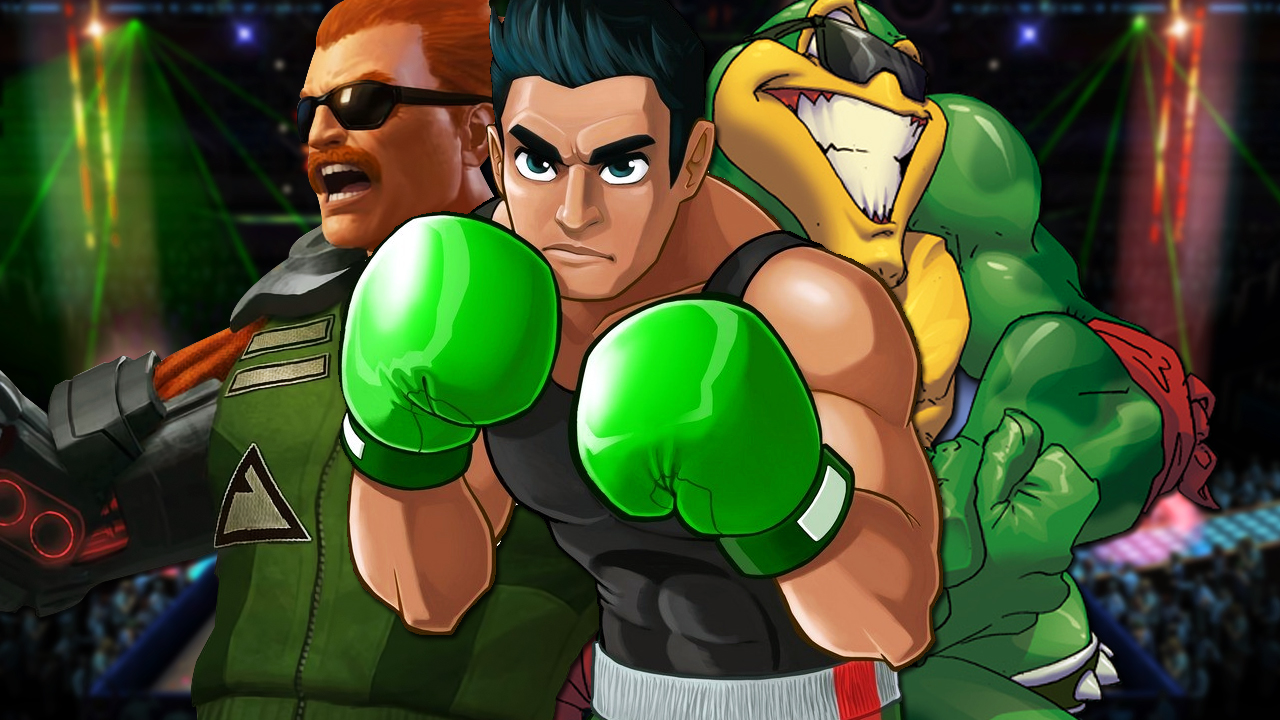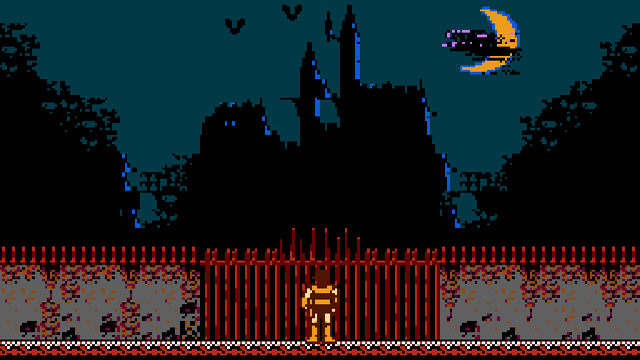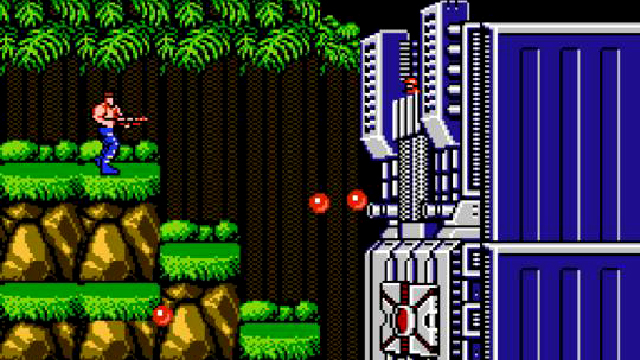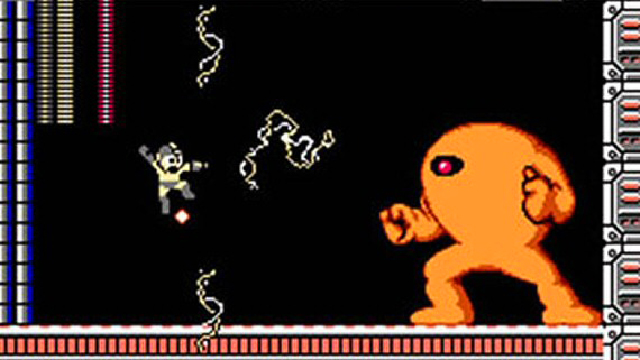The classic games that define "Nintendo Hard"
Abandon hope all ye that enter here...
Now you're playing with power

"Nintendo Hard." It's a term that defines the company's past, when the Nintendo Entertainment System was known for being that totally sweet new gaming console your cousin owned, and for having really, really tough games. Such brutality comes in many different and exciting flavors. A game can be difficult because it's genuinely hard, or because it demands you finish the entire adventure in one sitting. It can litter the playing field with spikes and bottomless pits (which we'll see lots of in these slides), or be so hopelessly obtuse you have no idea how to advance.
There are plenty of NES games that are Nintendo Hard for all the wrong reasons. Games that are miserable experiences no human should have to endure, such as Yo! Noid, Silver Surfer, Teenage Mutant Ninja Turtles (everything about that game is pain), and countless others. This is not a celebration of such unfortunates. This is a celebration of the games that are tough for all the right reasons. Ones that best exemplify the term Nintendo Hard, and wear the title as a badge of honor.
Nathan render credit to esiao.
Battletoads

No other game on this list better codifies the term "Nintendo Hard" than the 1991 beat-'em-up Battletoads. It is the apex; the alpha and omega of mind-bending, controller-smashing difficulty. Many have attempted the impossible, few have succeeded. Things start out innocently enough. The first stage is your typical brawler. Next you're descending by rope down a vertical shaft; the confined space makes friendly fire an issue, but it's not too bad. Then you hit stage three - Wind Tunnel - and the game is basically over. It's a seemingly endless string of obstacles that demands split-second precision and timing. The amount of practice and repetition it would take to master this section is astronomical, and (somehow) the game only gets harder from here.
Bionic Commando

In a time dominated by 2D platformers, Bionic Commando dared to inhibit the genre's most sacred action: jumping. You can't jump in Bionic Commando. Instead, you have a bionic arm that lets you swing, hoist, and otherwise maneuver yourself around stages. It takes some time to accept that you can't freely jump over every obstacle, but once you wrap your head around the controls, it's a blast swinging around as Rad Spencer. That is, until you get to the later stages when the game ramps up the classic 2D pitfalls: spikes and bottomless pits. You're also expected to string together longer and longer strings of grapple shots together to navigate hazardous areas - and, of course, one screw up means instant death.
Blaster Master

Blaster Master is a massive adventure whose size and scope are as much a source of enjoyment as they are exhaustion. This game has it all: one minute you're fighting in a tank against swarms of deadly mutants, the next you're out of the tank, on foot, seeing the game from a new, top-down perspective (but still shooting mutants). Eventually you start unlocking power-ups, which you use by backtracking to previous stages. However, the game doesn't tell you any of this so it's very easy to get lost or simply not know what to do next. Plus, Blaster Master is a marathon. With only a few continues and no save function, you have to play very, very carefully if you hope to see the ending.
Castlevania

Forget Nintendo Hard, the original Castlevania achieved Dark Souls-levels of difficulty decades before Dark Souls even existed. Everything you do is this Hollywood horror-filled platformer is just so deliberate, so heavy. When you jump - that's it - you're jumping, and the only thing that can alter your trajectory is the Medusa Head that's headed your way. Cracking your whip has the same limitations; each action must be taken very deliberately. The odd skeleton or zombie won't give you too much trouble, but (just like in the Souls series) it's the bosses that propel this game into the stratosphere of difficulty.
Weekly digests, tales from the communities you love, and more
Contra

Contra would be damn near impossible were it not for the grace of the Konami code, which gives you a cool 30 lives to throw against the endless streams of bullets and bottomless pits this run-and-gun shooter sends your way. Everything kills you in one hit - I mean, your character isn't wearing a shirt after all, so I guess that makes sense. You can even team up with a buddy and play cooperatively, but since you share the same life pool you'll be burning through lives twice as fast. Even with the code, beating Contra still takes a lot of practice - doubly so (quadruply so?) when you try it with the default life count of three.
Final Fantasy

Making its debut on the NES, Final Fantasy presents a challenge unlike anything else on this list. It doesn't demand hair-trigger reflexes or timing. It moves at your pace, complete with a save function (a rarity at the time). Still, as a precursor to the JRPG genre, Final Fantasy lacks many modern conveniences. Did you target an enemy who died before you got the chance to attack? That attack is now an automatic miss and is wasted. Do you think spells run on MP? Nope, spells can only be cast a certain number of times per day - hope you're not far from an Inn when they run out. The list goes on, but you get the idea.
Super Mario Bros. 2

Known as The Lost Levels here in the West, Super Mario Bros. 2 is the most challenging Mario game ever released. The first Super Mario Bros. wasn't a walk in the park, but after its runaway success, diehard fans were clamoring for more levels, more secrets, and more challenges to test their platforming prowess. With a sidelong smirk and twist of the mustache, Nintendo unleashed this beast on the public. Now, the poison mushrooms, invisible blocks designed solely to bounce into an early grave, and overabundance of Hammer Bros. I can understand. But this game went so far as to have secret warp pipes that send you back to the start of the game. I mean, is nothing sacred anymore?
Mega Man

Mega Man's NES run - which is meticulously preserved in the Mega Man Legacy Collection - hides some of the consoles most insidious challenges. It all started with the very first Mega Man game and those maddening trapdoor platforms in Guts Man's stage, or the vanishing blocks in Ice Man's stage. But all that is cake compared to the Yellow Devil, which is a fitting name as it is the literal devil. Fighting this cycloptic robot feels like battling a bullet hell shooter as you try and weave between its many projectiles. Of course, in proper NES fashion, there's a trick involving the Select button you can exploit to make this fight a little easier.
Ninja Gaiden

Ooph! Just thinking about this game makes me hurt. Playing Ninja Gaiden is like letting a couple of bodybuilders take turns walloping you in the gut - only they're wearing ninja masks. This game is just mean. Its protagonist, Ryu Hayabusa, may be a totally sweet ninja who does flips and can murder anything with a swing of his sword, but he has one critical weakness: birds. Just like the Medusa Heads in Castlevania, these freaking birds will strike without warning and knock you into the nearest bottomless pit, without fail. Forget the respawning enemies or pain-filled gauntlet that is the final stage; it's the birds, and their predatory instincts, that are the true killers here.
Punch-Out!!

There are some out there who have achieve Jedi-like oneness with this game, to the point that they can complete Punch-Out!! blindfolded. But for the rest of us this puzzle game disguised as a boxing match is a tough nut to crack. It's not the most sinister game on this list, but the variety of gimmicks and attack patterns the other boxers employ requires a lot of trial and error to beat. And even when you know the tricks, you might have only a second or two to act, meaning you must be on point at all times if you want a shot at Mike Tyson (who can end the fight with a single punch).



